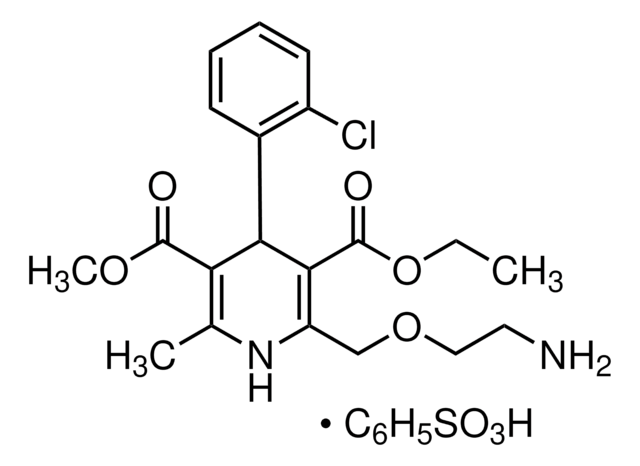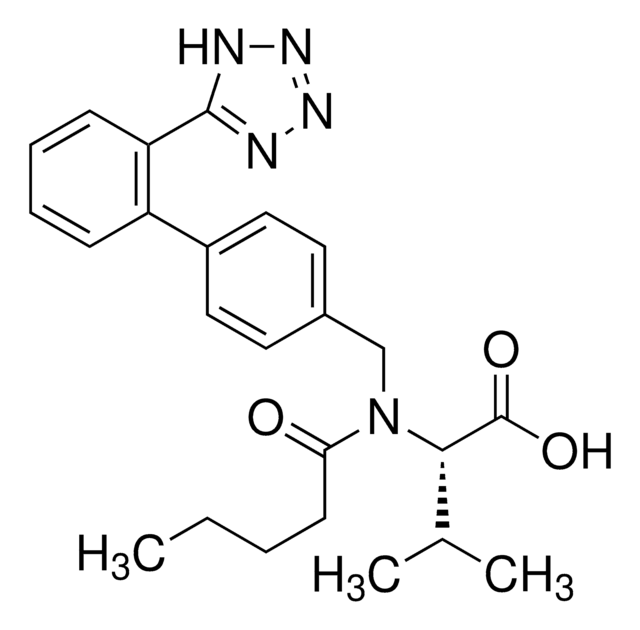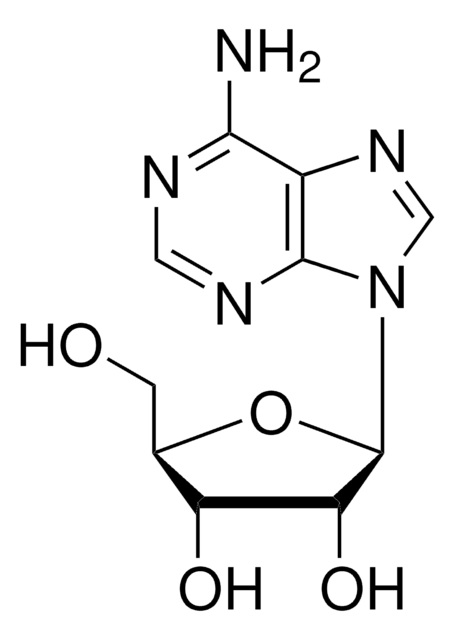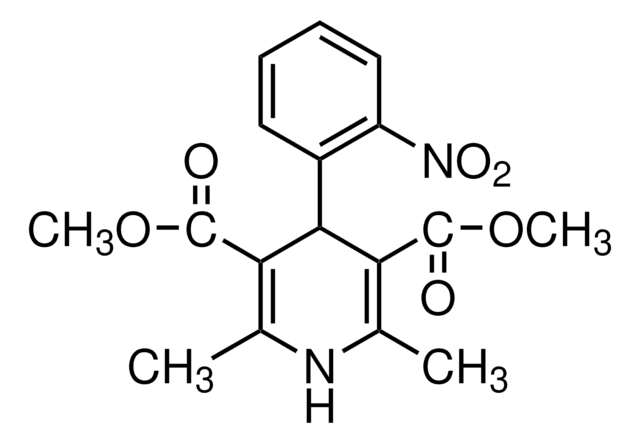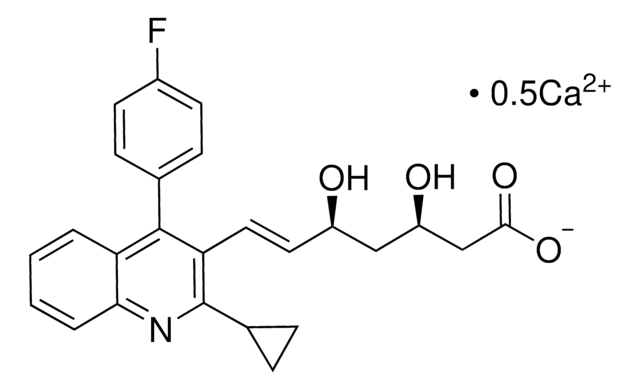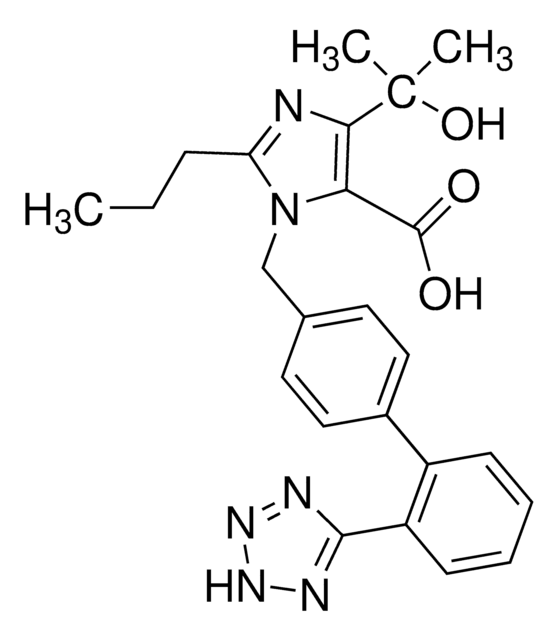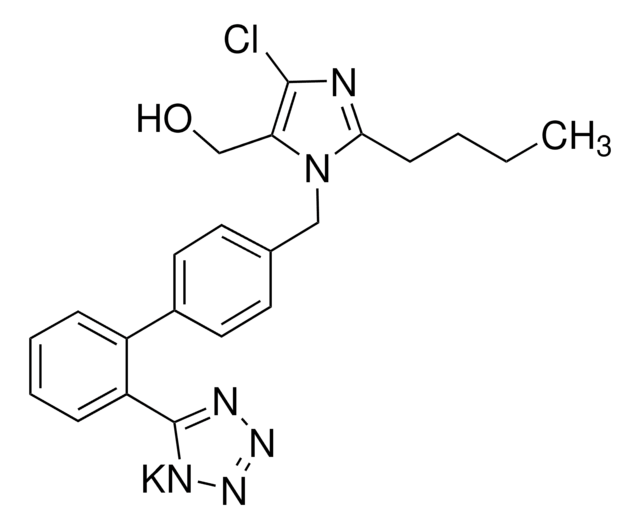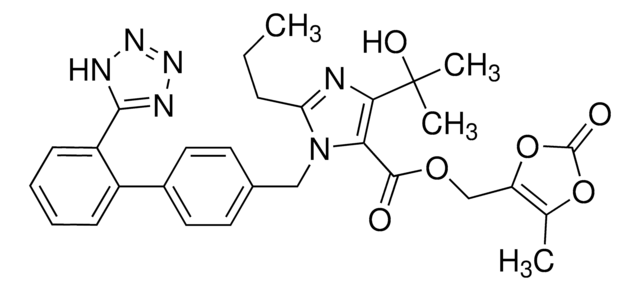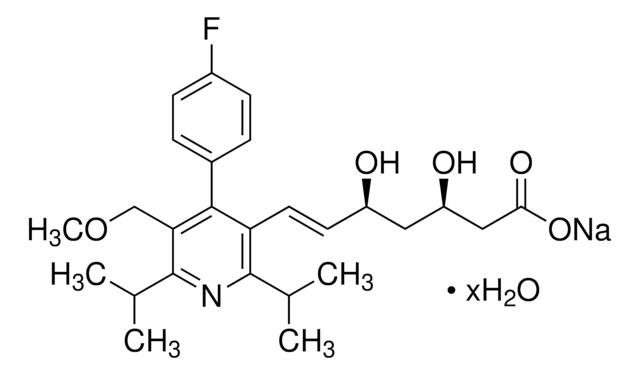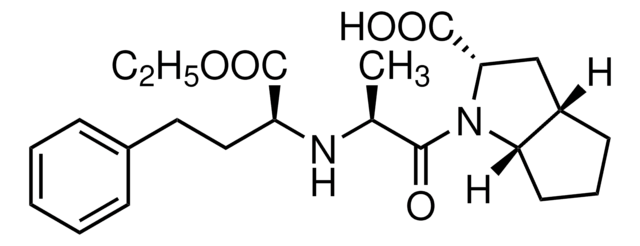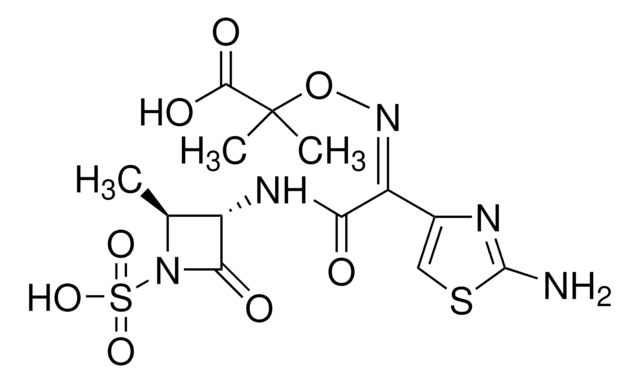T8949
Telmisartan
≥98% (HPLC), solid
Synonym(s):
4′[(1,4′-Dimethyl-2′-propyl[2,6′-bi-1H-benzimidazol]-1′-yl)methyl][1,1′-biphenyl]-2-carboxylic acid, BIBR 277
About This Item
Recommended Products
Quality Level
Assay
≥98% (HPLC)
form
solid
color
white
solubility
DMSO: >5 mg/mL at 60 °C
H2O: insoluble
originator
Boehringer Ingelheim
SMILES string
CCCc1nc2c(C)cc(cc2n1Cc3ccc(cc3)-c4ccccc4C(O)=O)-c5nc6ccccc6n5C
InChI
1S/C33H30N4O2/c1-4-9-30-35-31-21(2)18-24(32-34-27-12-7-8-13-28(27)36(32)3)19-29(31)37(30)20-22-14-16-23(17-15-22)25-10-5-6-11-26(25)33(38)39/h5-8,10-19H,4,9,20H2,1-3H3,(H,38,39)
InChI key
RMMXLENWKUUMAY-UHFFFAOYSA-N
Gene Information
human ... AGTR1(185)
Looking for similar products? Visit Product Comparison Guide
Application
Biochem/physiol Actions
Features and Benefits
Preparation Note
Storage Class Code
11 - Combustible Solids
WGK
WGK 3
Flash Point(F)
Not applicable
Flash Point(C)
Not applicable
Personal Protective Equipment
Choose from one of the most recent versions:
Already Own This Product?
Find documentation for the products that you have recently purchased in the Document Library.
Customers Also Viewed
Related Content
Discover Bioactive Small Molecules for ADME/Tox
Our team of scientists has experience in all areas of research including Life Science, Material Science, Chemical Synthesis, Chromatography, Analytical and many others.
Contact Technical Service
